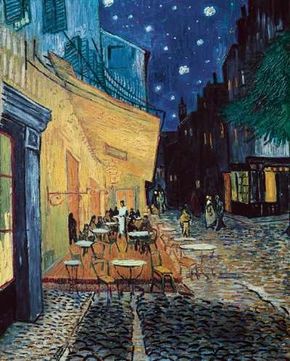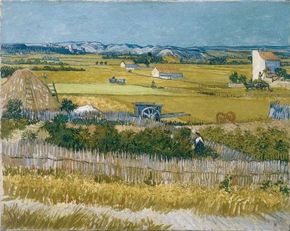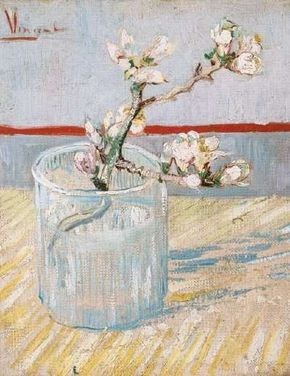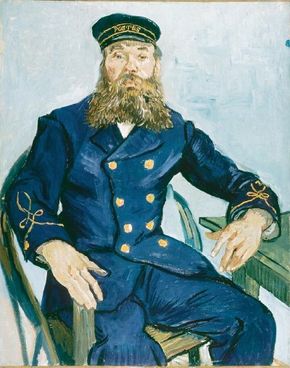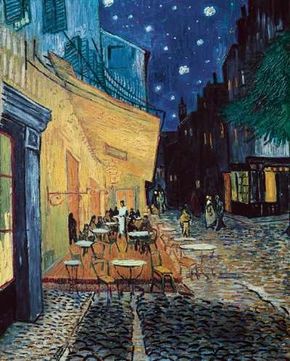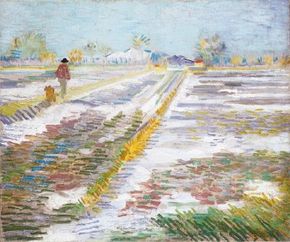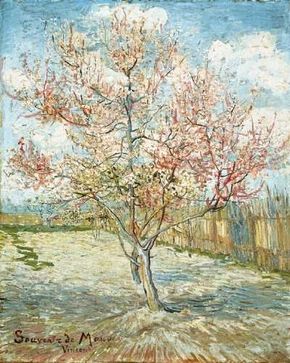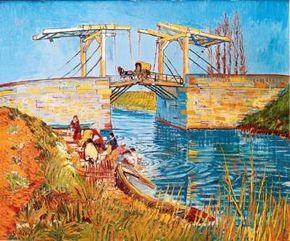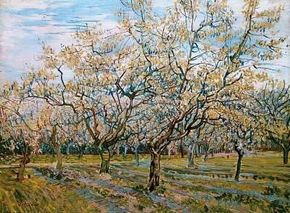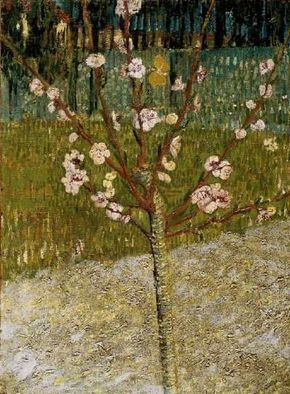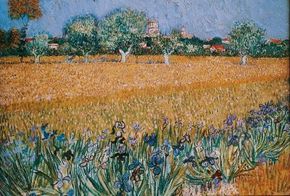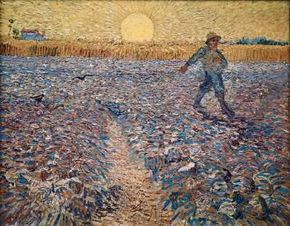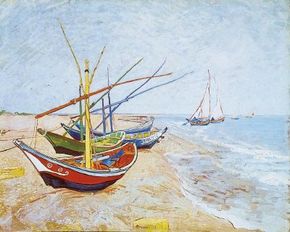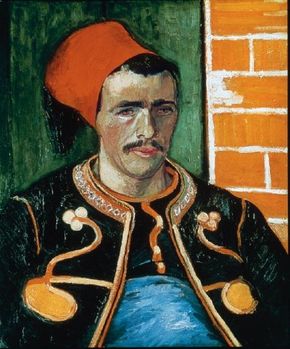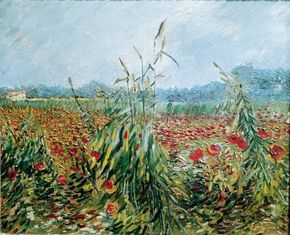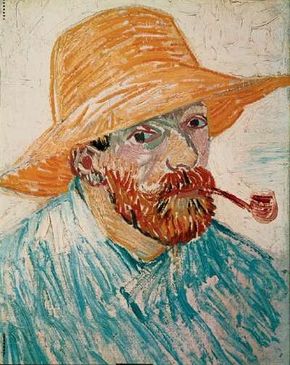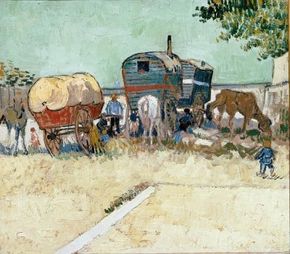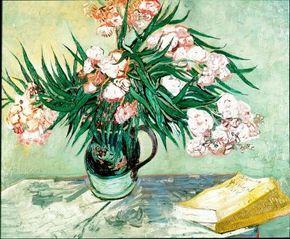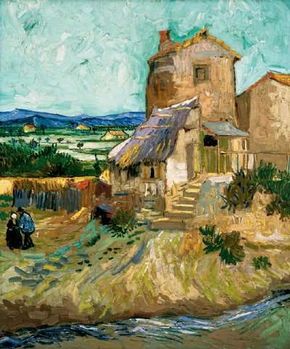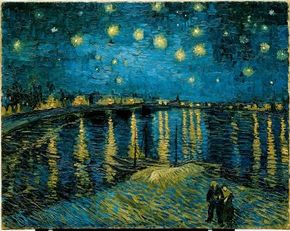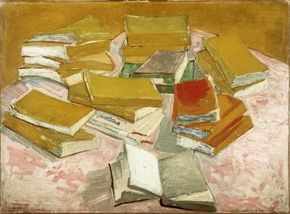Vincent van Gogh's years in Paris had been invigorating, but he was now feeling physically drained and emotionally overstimulated. He longed for a community of like-minded painters who would live and work together in harmony with nature and one another, as he imagined artists lived in Japan. To pursue these ideals, van Gogh decided to move to Arles, in the south of France.
Van Gogh arrived in Arles during the middle of a heavy snowstorm late in February 1888. Although spring seemed distant, he noticed an appealing and subtle difference in the color of the landscape from that of the north. There were yellow rocks and red soil, as well as mountains beyond the village that appeared lilac in the chilly air.
Advertisement
After years of painting bouquets in Paris, van Gogh was now inspired by the spectacle of the flowering fruit trees in the early spring. He set up his easel in the orchards, working swiftly to capture the ephemeral beauty before the burgeoning fruit replaced the flowers. He used pure pigment to get the freshest tones and applied it to his canvas with a light touch to echo the pale, translucent petals flickering on the branches.
Van Gogh abandoned the self-conscious approach to painting he had practiced in Paris and followed his own instincts. He worked freely over the surface of his paintings, applying thick paint on some areas while allowing bare patches of raw canvas to remain exposed. By mid-May, van Gogh had completed at least 20 canvases.
Van Gogh's paintings from Arles reflect an artist discovering new colors, new contrasts, and new enthusiasm. The following pages take you to these paintings.
- The Harvest: Vincent van Gogh used the natural elements of a country landscape to structure the composition of The Harvest. Learn how van Gogh created this depiction of the first grain harvest of the season.
- Sprig of Flowering Almond Blossom in a Glass: As Vincent van Gogh explored the Arles countryside, he became fascinated with the tiny green buds on the bare branches of almond trees. Learn how van Gogh composed Sprig of Flowering Almond Blossom in a Glass.
- The Postman Joseph Roulin: Vincent van Gogh created a friendship with the subject of this painting, postman Joseph Roulin. Learn how van Gogh used the contrast of primary colors to create a vibrant effect in The Postman Joseph Roulin.
- Café Terrace on the Place du Forum, Arles, at Night: Vivid colors enhance a nightlife scene in this Vincent van Gogh painting. Learn how van Gogh applied the practice of plein air painting to an evening composition.
- Landscape with Snow: Vincent van Gogh found new inspiration in the Arles countryside. Observe how van Gogh applied his characteristic interpretation of color to this winter landscape.
- Peach Tree in Blossom (Souvenir de Mauve): Vincent van Gogh took great delight in painting the fruit trees of Arles while they were in full blossom. Read about Peach Tree in Blossom (Souvenir de Mauve), a painting van Gogh dedicated to Anton Mauve, the first painter to encourage him to work in color.
- Langlois Bridge at Arles with Women Washing: Learn how Vincent van Gogh applied the principles of Japanese art to Langlois Bridge at Arles with Women Washing.
- The White Orchard: Working with urgency, Vincent van Gogh sought to capture the splendor of trees in full bloom before the change of seasons. Observe the fresh, bright colors of The White Orchard.
- Almond Tree in Blossom: In Arles, Vincent van Gogh abandoned the analytical path he'd adopted in Paris. For an example of van Gogh's newfound spontaneity, observe Almond Tree in Blossom.
- Field of Flowers near Arles: Vincent van Gogh composed this painting after the early arrival of summer in Arles. Note the brightening of van Gogh's color palette in Field of Flowers near Arles.
- The Sower: Vincent van Gogh's use of color and brush stroke come together to create this dramatic composition. Learn more about The Sower.
- Fishing Boats on the Beach at Saintes-Maries-de-la-Mer: Sketching from the shore, Vincent van Gogh composed this painting with a high level of control. Note van Gogh's use of constraint in Fishing Boats on the Beach at Saintes-Maries-de-la-Mer.
- The Zouave: Vincent van Gogh believed that a painting's subject inspired the palette. Learn how van Gogh used color to portray the Zouave, a division of French-Algerian soldiers he encountered in Arles.
- Corn Fields and Poppies: Vincent van Gogh successfully integrated his Impressionist and Japanese influences in this painting. Learn more about van Gogh's approach to painting Corn Fields and Poppies.
- La Mousme, Sitting: Learn how Vincent van Gogh, inspired by Pierre Loti's novel Madame Chrysantheme, painted La Mousme, Sitting.
- Self-Portrait with Pipe and Straw Hat: One of Vincent van Gogh's many self-portraits, this piece embodies van Gogh's feelings of kinship with the local Arles farmers. Learn about Self-Portrait with Pipe and Straw Hat, which van Gogh painted near the end of his summer in Arles.
- Encampment of Gypsies with Caravans: Vincent van Gogh focused on the application of pigment to canvas when he composed Encampment of Gypsies with Caravans. Observe how the thick layers of paint recorded every action of van Gogh's brush.
- Oleanders: Characteristic of most of Vincent van Gogh's still-life compositions, the objects in this painting hold special meaning for the artist. Learn about the significance of the objects in Oleanders.
- Ploughed Field: In this piece, Vincent van Gogh again employed his technique of applying thick strokes of pigment to the canvas. Observe the individual brush strokes and heavy pigment of Ploughed Field.
- The Old Mill: The thick articulation of the artist's brush strokes bring an expressive quality to The Old Mill. Learn more about the technique Vincent van Gogh used to create this painting.
- Starry Night over the Rhône: Vincent van Gogh used a strong contrast of primary colors to create Starry Night over the Rhône, a vision of an evening sky sparkling with stars.
- Study for "Romans Parisiens": The books in this still life seem to exude individual personalities. Learn more about Vincent van Gogh's Study for "Romans Parisiens."
- Willows at Sunset: In this painting, Vincent van Gogh employs a vivid, saturated palette to portray the change of seasons from summer to autumn. Learn more about Willows at Sunset.
Horizontal bands of golden wheat stir in the foreground of Vincent van Gogh's The Harvest. Learn about this painting in the next section.
To learn more about art, famous artists, and art history, check out:
Advertisement
